Biography
Ferdinand Elisa Hart Nibbrig (1903–1993)
-
Born on 22 January 1903. Grew up together with two elder brothers and a younger sister as the son of the artist Ferdinand Hart Nibbrig (1866-1915) in the Dutch artists’ village Laren. Lost his father at the age of twelve.
After his high school graduation, he earned a ship passage to New York through shovelling coals. Helped his elder brother on a farm on the Hudson near Albany. From 1923 to 1927: worked for the Sugar Broker Lemborn & Co.
In the meantime: visited his sister, who studied eurythmic dance in Vienna, his mother Johanna Bertruida (née Moltzer), who had settled in Dornach near Basle, and the elder brother, who pursued a timber business in Tyrol.
He went to San Francisco on a ship passing through the Panama Canal. Worked as a dishwasher in the Saint Francis hotel; in the following years he occupied leading positions in several companies in the international steel import trade. Later also in Los Angeles.
At the same time he conducted several journeys: to Danzig, where his eldest brother acted as Dutch consul; to his mother in Dornach; to Norway, where he undertook his first, later abandoned, writing attempts and started to draw; to Poland, where his second eldest brother ran a business in the sugar trade. Back in the United States: crossed Mississippi, Nevada, Arizona and New Mexico with his tent. A few months in Honolulu. Afterwards as an assistant of an ornithologist in the jungle of Celebes. First artistic realization of the impressions that would later manifest mnemonically in his paintings.
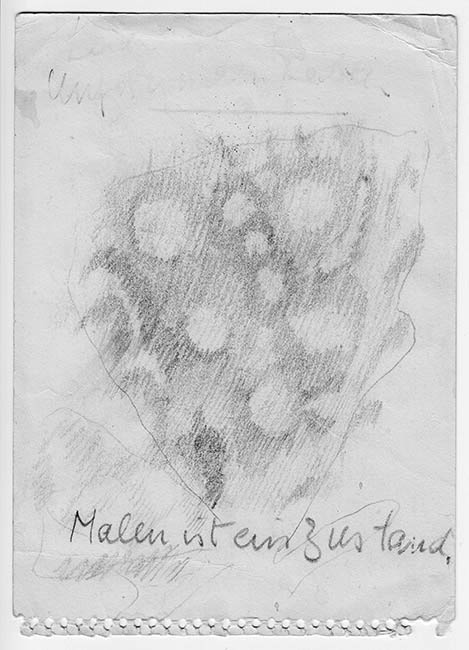
Back in the United States. His first marriage with Gertrude Potter in San Francisco. Divorced in 1934. US citizenship.
From Vancouver to Juno, Alaska, where he lived on his own in a shack and worked intermittently on a mink farm; later, assistant of an archaeologist at excavations on the island of Kodiac.
Return to California. Two sons from his relationship with Annabelle Roy: Nand Engie and Harald Christian.
In order to dedicate his future life solely to his art he regarded it preferable to return to Europe instead of settling down in New York.
Lived, drew and painted in Amsterdam, first also on a houseboat.
1938: Marriage with Elsbeth Witt (1915-1993) from Basle.
-
Spent a month in Sibenik, Yugoslavia. Intense painting activity.
Move to an atelier in Paris.
After the outbreak of World War II: left everything behind. Hasty return to Switzerland in the last blacked-out train. Move to an atelier flat in Dornach.
His son Christiaan Lucas is born.
Until the end of the 50s: alternating between longer periods in the Swiss Alps during the summer months (Grächen, Curaglia im Misox, Savognin, Lötschental) and the West Frisian island of Terschelling. A few times also in Audierne, Bretagne.
1949: Regained Dutch citizenship.
1953: exhibition of 58 works in the Gallery Alioth in Basle.
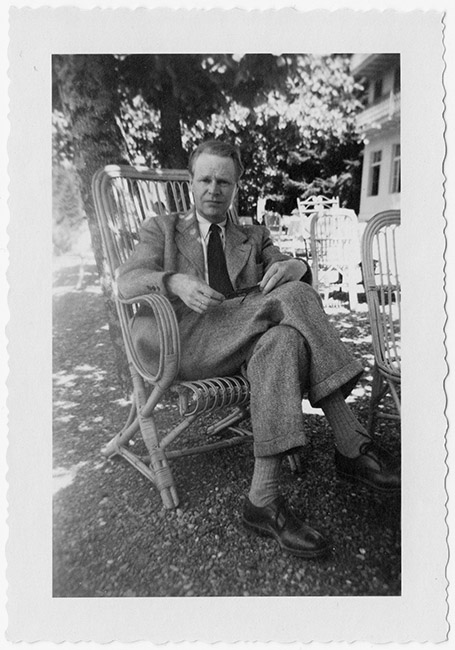
60s: regular visits to Tuscany, where his elder brother owned a country house between Lucca and Viareggio, to Castagneto di Carducci and Bolgheri.
70s: regular visits to Nazaré, Portugal, where, engaged in drawing, he gained important artistic inspirations.
From the 80s until the end: regular trips to neighbouring Sundgau in Alsace (in particular Oltingen, an important source of motifs, with its church and cemetery, the rural landscape with its wide sky, reminding him of the Netherlands, the Roma settlement, to which he gained access.)
Died in 8 May 1993 in Dornach.
SSeptember 1994: Commemorative exhibition in the local museum ‘Trotte’ in Arlesheim
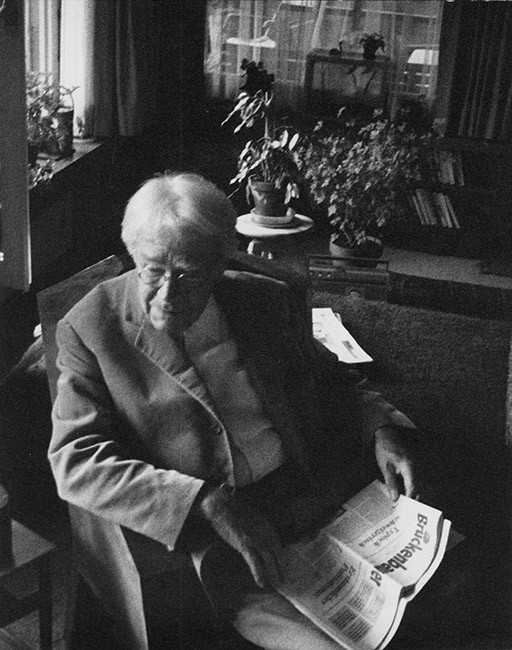
Literatur:
Monography Ferdinand E. Hart Nibbrig.
With a text by Christiaan L. Hart Nibbrig, Ittigen 1994
Ferdinand Hart Nibbrig, an academically educated and well recognised painter in the Netherlands who died young,
was equally close and far in the mind of the young Ferdinand E. Hart Nibbrig. The link: Like his father, he had an intense
interest in the everyday life of simple artisans, farmers and fishermen. Early in his life he uprooted himself from his
Dutch homeland and only while travelling and drawing abroad did he realise that art would need to become the centre of his
life. The homeless artist, constantly looking out for a new place to dwell, was stranded during the war in Basle. But in the
end he also remained a foreigner there. The Northern Swiss border town of Basle, pressurised by global politics, was scarcely
open enough to welcome this globetrotter with his American passport, and to appreciate him as an artist. Thus, after the war
and into old age he remained a shy and elusive outsider, who created for himself in his art, with its creative stubbornness,
a homeland far removed from any idyll. In his pictures, he had to create through painting the sole place where he could feel
at home. In the strong and colourful pictorial visions of his later life apocalyptic moments and the hope of redemption are
in close proximity.
His expressive will became increasingly more energetic and freer, his painterly signature stronger, his eye more visionary.
Never faltering from the outset: the astonishing attentiveness for everything he sees, be it imaginative or foreign, he
transports within, and offers us to view in his pictures, and, as through windows, see through. If attentiveness is, following
Novalis, the natural prayer of the soul, this painter increasingly prayed in such a way. And because he took a critical
interest in word affairs every day until the very end, one can’t shrug off his devotion to the supposedly inconspicuous –
mountain, plant, animal, human gesture and expression – as a retreat into the benign, but rather view it as an artistic
‘nonetheless’ and ‘all the more’.
This sequence of selected paintings, presented here online, documents a quiet and imperturbable artist’s life in the slipstream of the vociferous and successful painting of the twentieth century and its changing styles. A new era in the sign of the internet offers this wrongfully ignored and to be discovered work the opportunity of a belated visibility and the appreciation of future beholders.
The Father
Ferdinand Hart Nibbrig (1866–1915) und das Künstlerdorf Laren
-
Ferdinand Hart Nibbrig was born into an art-minded merchant family in Amsterdam. His talent was discovered by artistic friends of his father and led him to a five-year long artistic education at the Rijksakademie in Amsterdam, followed by a stay at the Académie Julian and in the atelier Cormon in Paris. He was friends with Pissarro. At first influenced by Amsterdam impressionism, he encountered the paintings of Vincent van Gogh and Georges Seurat’s pointillism. His first atelier in Amsterdam originally belonged to Jozef Israël. At the beginning of the 90s he moved to Laren, northeast of Hilversum. In 1895 he married Johanna Bartruida Moltzer (1869-1957) in Amsterdam.
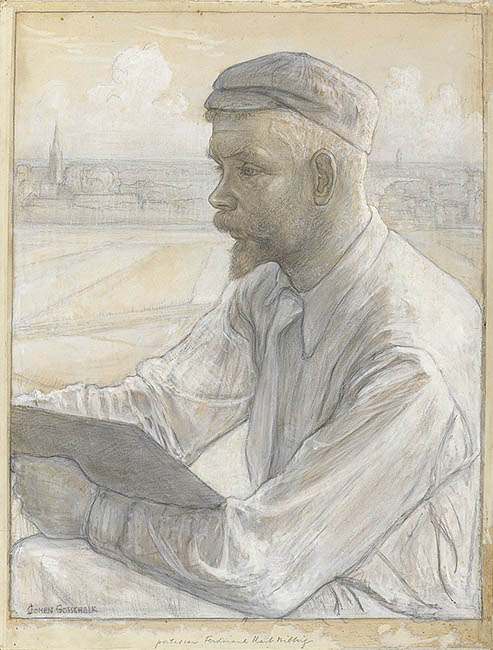
Johann Cohen Gosschalk (1873-1912).
Portrait drawing by Ferdinand Hart NibbrigUntil the second half of the nineteenth century Laren was a farming village. Its unspoilt landscape with its variety of motifs was discovered by the painter Jozef Israël and some members of the Hague school in 1870. This first generation consisted of Anton Mauve, Albert Neuhuys and some other artists. An artists’ colony gradually developed, comparable to the one in Worpswede. From 1884 Max Liebermann, who was friends with Jozef Israël, worked here repeatedly on paintings such as ‘The flax barn in Laren’ and ‘Sunday afternoon in Laren’.
-
Ferdinand Hart Nibbrig belonged to the second generation of artists who brought new life to Laren at the turn of the century. The American artist and collector William Henry Singer was amongst them. A modern art museum came into being, next to his villa that he built in 1911, where the school of Laren found a home and where also a number of Hart Nibbrig’s paintings are housed.
With his luminism, a style that he helped develop, Hart Nibbrig introduced a strong brightening up of colours in Laren. He had some students here such as Jacoba van Heemskerck. In 1908 his wife Johanna left the Dutch Reformed Church and started to develop an interest in theosophy. Her husband followed suit. Hart Nibbrig’s atelier house, built in 1910, became a meeting place for theosophical and philosophical discussions. This was the environment where his son Ferdinand E. Hart Nibbrig, born in 1903, grew up with his three siblings.
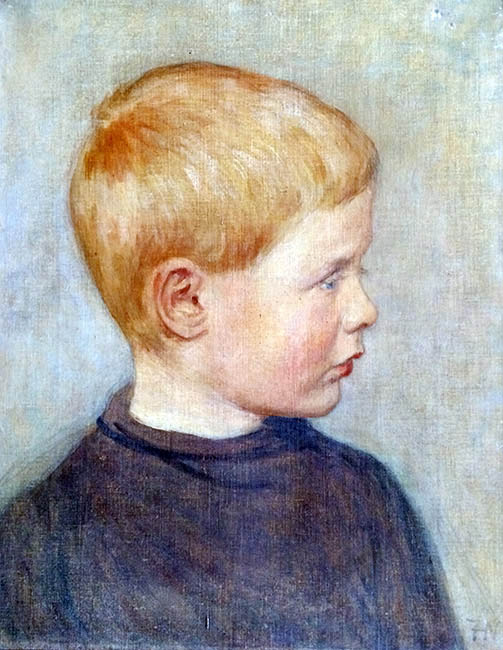
Ferdinand Hart Nibbrig.
Portrait of his son Ferdinand. E. Hart Nibbrig.
Around 1907The father Ferdinand Hart Nibbrig has a significant place in the Dutch art of the turn of the century. Streets in Amsterdam and The Hague are named after him. (AM)